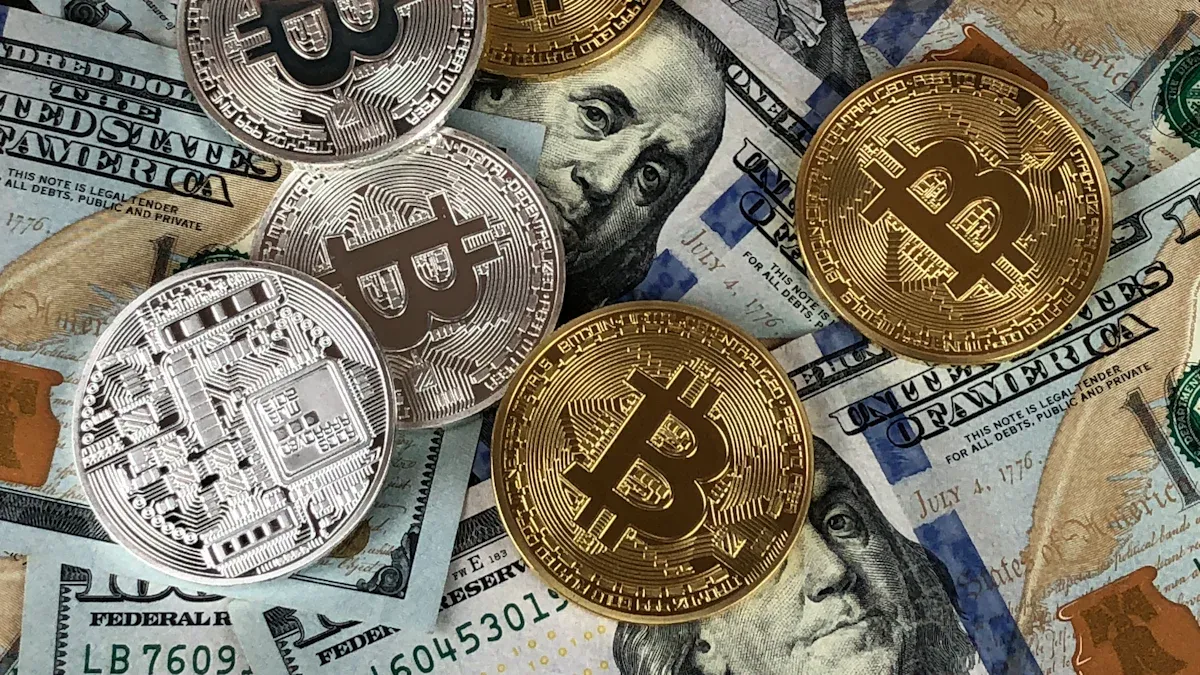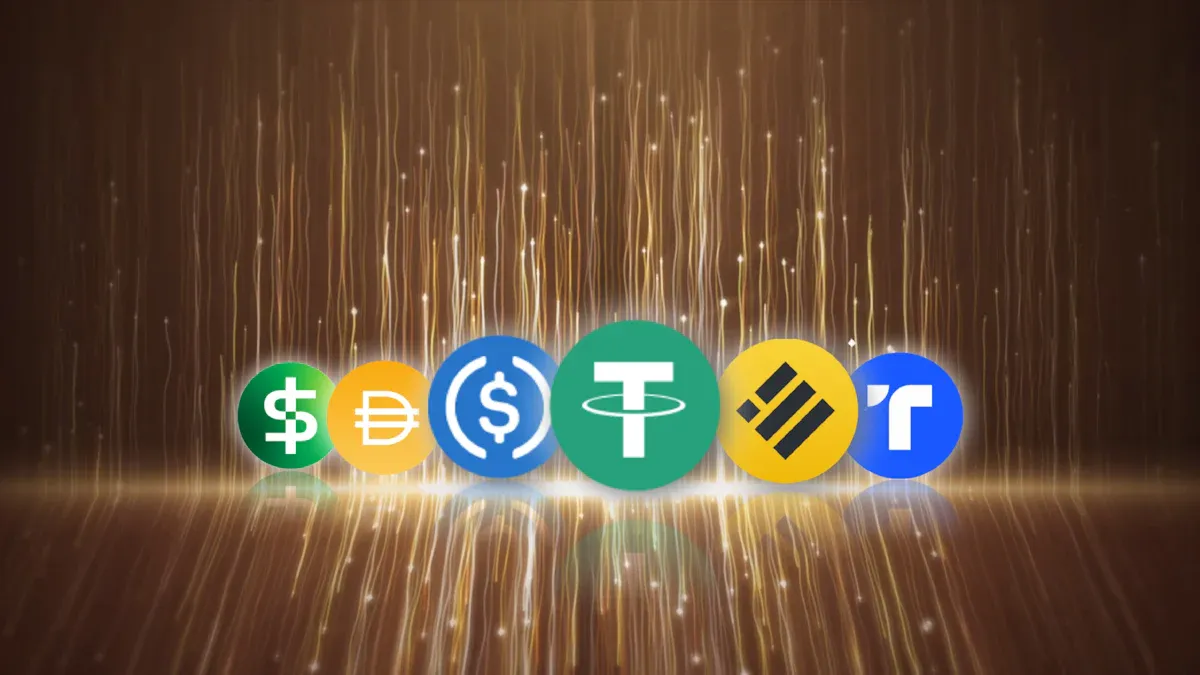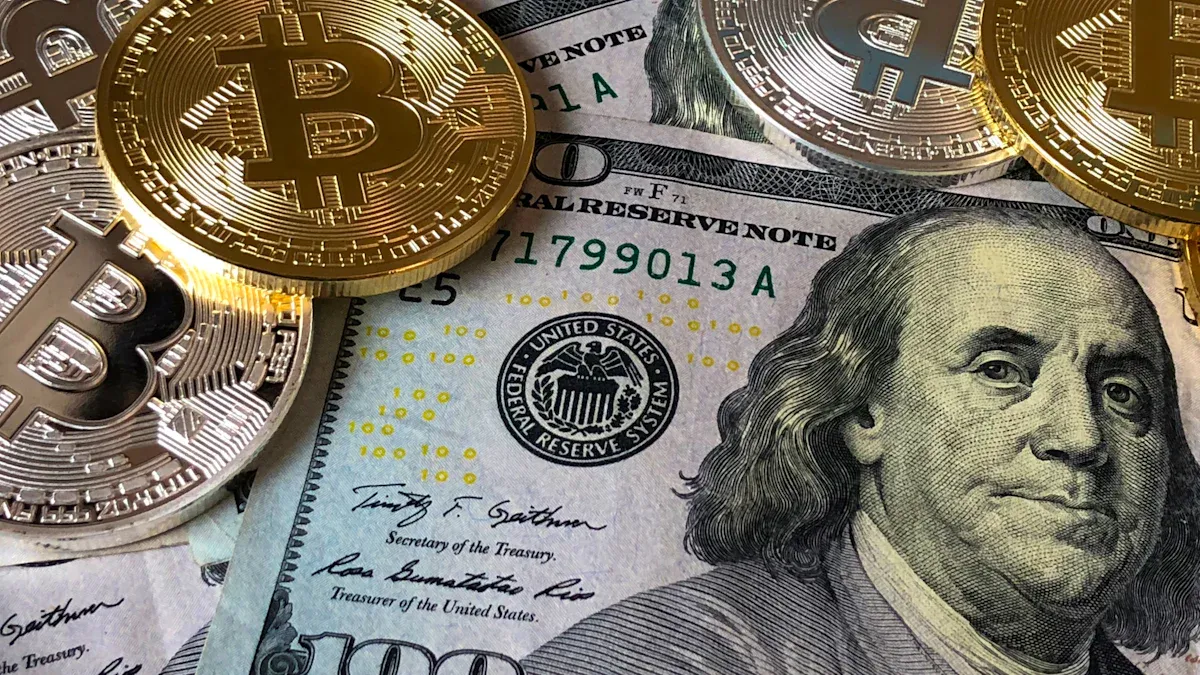- EasyCard
- Trade
- Help
- Announcement
- Academy
- SWIFT Code
- Iban Number
- Referral
- Customer Service
- Blog
- Creator
Stablecoin International Remittance Guide: How to Use USDT to Save on Exchange Rates and Fees

Image Source: pexels
Are you still troubled by high international remittance fees and long waiting times? The average fee for traditional bank wire transfers is usually between 35 USD and 50 USD, and funds take 1 to 5 business days to arrive.
Stablecoin international remittances offer a disruptive solution. You can achieve near-real-time fund transfers, with the entire process taking only a few minutes. More importantly, transaction fees can easily be controlled under 1 USD, operating year-round without any holiday restrictions.
Key Takeaways
- USDT international remittances are faster and cheaper than traditional bank remittances.
- When buying USDT, you should select merchants in the C2C market with quotes close to the real-time exchange rate.
- When transferring USDT, you should choose the TRC-20 or BSC network to reduce fees.
- When the recipient sells USDT, you should choose buyers with high bids and good reputations.
- You must carefully verify the recipient address and network to ensure fund safety.
The First Step in Stablecoin International Remittances: Buying USDT

Image Source: unsplash
To complete a successful stablecoin international remittance, the first step is to use your local fiat currency (such as CNY, HKD, etc.) to purchase USDT. This process is usually done in the C2C (Customer-to-Customer) market of mainstream cryptocurrency exchanges. The C2C market allows you to trade directly with other users, with the exchange acting as an intermediary platform providing escrow.
Comparing C2C Market Exchange Rates
Your primary goal is to buy USDT at the most cost-effective price. A key reference indicator is the real-time offshore exchange rate (e.g., USD/CNH). Ideally, the price you pay for USDT should be very close to or even slightly below this rate.
You can follow these steps to find the best exchange rate:
- Open the Exchange C2C Market: Log in to mainstream platforms like Binance or OKX and enter the C2C trading area.
- Select Fiat and USDT: In the buy section, choose the fiat currency you will pay (e.g., CNY) and the digital asset to purchase as USDT.
- Compare Merchant Quotes: You will see a list of different merchants. Carefully compare their quotes.
Core Tip Look for merchants whose quotes are closest to the real-time offshore exchange rate. If a merchant’s quote is far above the market average, it means you are paying unnecessary premium, increasing remittance costs.
To help you understand more intuitively, here is an example. Assume the current real-time rate is 1 USD = 7.25 CNH:
| Merchant Type | Quote (CNH/USDT) | Cost to Buy 1,000 USDT | Premium Situation |
|---|---|---|---|
| Recommended | 7.25 | 7,250 CNH | No premium, lowest cost |
| Avoid | 7.35 | 7,350 CNH | Paid 100 CNH extra premium |
Identifying and Avoiding Transaction Premiums
After finding a good price, ensuring transaction safety is equally important. An extremely low price may sometimes hide risks. You need to learn how to screen reliable merchants and be wary of potential scams.
Checklist for Choosing Reputable Merchants:
- High Completion Rate: Look for merchants with a completion rate above 98%.
- High Transaction Volume: Choose merchants who have completed a large number of orders (e.g., thousands).
- Certified Merchants: Platform-certified merchants (usually with a yellow V mark) have undergone stricter reviews.
- Positive Reviews: Quickly browse user reviews to ensure no large number of negative feedbacks about fraud or delays.
Additionally, you must beware of “black USDT” scams. Some scammers list fake assets with names similar to USDT on C2C platforms and use temptingly low prices to attract users. This scam exploits users’ potential lax vigilance in decentralized environments, as asset verification is not automatic like on centralized exchanges.
Safety Tip Always trade through the exchange’s official C2C process. Do not conduct private transfers outside the platform. Before payment, confirm multiple times that you are buying official USDT (Tether USD), not any similarly named token.
By carefully comparing exchange rates and strictly screening merchants, you can safely and low-cost complete the first step of buying USDT, laying a solid foundation for subsequent low-fee transfers.
Choosing the Lowest Fee Network for Transfer
After successfully purchasing USDT, the next step is to transfer it to the recipient. This step is key to determining your remittance cost. USDT can exist on multiple different blockchain networks, and choosing different networks results in vastly different transfer fees and speeds. Making the right choice can reduce your fees from tens of USD to under 1 USD.
Mainstream Public Chain Fee Comparison
To understand fee differences, you first need to know several mainstream blockchain networks. Ethereum was one of the earliest networks supporting USDT, but its transaction speed is slower (about 15 transactions per second), causing congestion and high fees during busy periods. In contrast, emerging networks like TRON and Binance Smart Chain (BSC) have higher processing speeds, thus extremely low fees.
Here is a clear comparison for intuitive understanding:
| Network (Protocol) | Typical Fee (USD) | Expected Arrival Time | Address Format Start |
|---|---|---|---|
| TRON (TRC-20) | $1 - $2 | A few seconds | T |
| BSC (BEP-20) | ~$0.3 | A few seconds | 0x |
| Ethereum (ERC-20) | $15 - $35+ | Minutes to tens of minutes | 0x |
Core Conclusion The table clearly shows that using the ERC-20 network for transfers is very expensive, completely against our goal of saving fees. Therefore, for stablecoin international remittances, you should prioritize TRC-20 or BSC networks, which not only keep fees extremely low but also achieve near-real-time arrival speeds.
Detailed Withdrawal and Transfer Operations
Having understood the importance of network selection, let’s now enter the practical operation phase. Here are the detailed steps for withdrawing from the exchange and transferring to the recipient. The entire process requires extra care, as errors may result in permanent fund loss.
Step One: Obtain Recipient’s Address and Network First, you must confirm two pieces of information with the recipient:
- Their USDT receiving address.
- The blockchain network corresponding to that address (e.g., TRC-20).
Step Two: Initiate “Withdrawal” on the Exchange Log in to your exchange account (e.g., Binance, OKX), go to the “Assets” page, find your USDT, and click the “Withdraw” button.
Step Three: Select the Correct Transfer Network This is the most error-prone and critical step in the process. You will see a network selection list.
Critical Warning The network you choose must exactly match the network of the recipient’s address. For example, if the recipient provides a TRC-20 address, you must select TRC-20. If you choose the wrong network (e.g., sending USDT from a TRC-20 address to ERC-20 network), your funds will be permanently lost with almost no recovery.
Step Four: Fill in and Carefully Verify Recipient Address Paste the address provided by the recipient into the “Address” field. At this point, beware of malware called “clipboard hijacking”. It secretly replaces the copied address with the scammer’s after you copy it.
To ensure fund safety, follow this verification process:
- Manual Check: After pasting the address, carefully verify the first and last few characters to ensure it exactly matches the original address from the recipient.
- Format Confirmation: Different networks have specific address formats. For example:
- TRC-20 (TRON) addresses usually start with uppercase
T. - ERC-20 (Ethereum) and BEP-20 (BSC) addresses both start with
0x. This simple check helps initially confirm if the network selection is correct.
- TRC-20 (TRON) addresses usually start with uppercase
Step Five: Enter Amount and Complete Security Verification Enter the USDT amount you want to transfer; the platform will display estimated fees and actual arrival amount. Finally, enter your transaction password, email verification code, or Google Authenticator code as required to complete the withdrawal.
Safety Verification Checklist Before clicking “Confirm”:
- Is the network correct? (e.g., TRC-20)
- Is the address exactly the same? (verified start and end)
- Is the amount correct?
After completing the steps, your USDT will safely and low-cost arrive in the recipient’s wallet within minutes.
How the Recipient Converts to Fiat with Minimal Loss
When your USDT safely arrives in the wallet (e.g., Biyapay wallet), the remittance process is more than halfway done. The final and equally critical step is how the recipient converts these digital dollars to local fiat, such as HKD or CNY, with minimal loss. This process is also completed in the C2C market, but this time your role is “seller”.
Finding the Best C2C Sell Price
Your goal is to find the buyer with the highest bid to maximize the fiat amount received. This is the opposite of the sender’s logic of “finding the lowest price” when buying USDT. A good sell price should be very close to or even slightly above the real-time offshore exchange rate.
You can follow these steps to find the best sell price:
- Enter the C2C Market: In an exchange or wallet supporting C2C (e.g., Biyapay), go to the “Sell” USDT area.
- Screen Buyers: The system will display a series of buyers seeking USDT and their quotes.
- Compare Quotes: Carefully compare different buyers’ bids. Choose the buyer with the highest quote and matching your receipt method (e.g., bank transfer, Alipay).
Core Tip Prioritize certified merchants with high transaction volume and good ratings (above 98%). A reliable buyer not only offers competitive prices but ensures smooth transactions, avoiding unnecessary disputes.
Ensuring Funds Arrive Safely
When selling USDT in the C2C market, the platform’s “escrow service” is the core mechanism protecting your fund safety. Understanding and using this mechanism well can effectively prevent releasing USDT before receiving payment.
When you accept a buyer’s order, the transaction flow is as follows:
- Platform Escrows USDT: The USDT you prepare to sell is automatically locked (escrowed) by the platform. At this point, the buyer cannot access your USDT, and you temporarily cannot use it.
- Wait for Buyer Payment: The buyer pays you in fiat via your chosen receipt method (e.g., bank card) according to the order.
- Confirm Receipt: You must log into your bank account or e-wallet and personally confirm the funds have fully arrived. Do not trust any payment screenshots sent by the buyer.
- Release USDT: After confirming receipt, return to the trading platform and click “Confirm Receipt and Release”. The platform then releases the escrowed USDT to the buyer.
Safety Tip Throughout the transaction, keep screenshots of communications with the buyer. In case of disputes (e.g., buyer claims payment but you did not receive), these screenshots are strong evidence for platform appeals. Absolutely do not click “Release” before confirming fiat receipt.
After the transaction, fiat safely enters your account. You can withdraw or use these funds from your Hong Kong bank account anytime, completing the entire international remittance process efficiently and low-cost.
Cost and Efficiency Comparison: USDT vs. Traditional Remittance

Image Source: pexels
After theoretical explanation, let’s intuitively feel the huge advantages of stablecoin international remittances in cost and efficiency through a specific case and clear comparison table.
Specific Case Cost Analysis
Assume you need to remit 1,000 USD from the U.S. to a Hong Kong bank account. We calculate the final costs of both methods.
Method One: Traditional Bank Wire Transfer Many banks charge a fixed wire fee (usually 35 USD) and hide profits in the exchange rate. This rate markup can be as high as 1.75% to 3.5%. Even conservatively at 2%, your hidden cost is 20 USD.
- Total Cost = Fixed fee ($35) + Rate loss ($20) = $55
- Recipient Actually Receives ≈ $945
Method Two: Using USDT (TRC-20 Network) You complete the process via platforms like Biyapay. You buy USDT in the C2C market at near real-time rate and transfer via TRC-20.
- Total Cost = Network fee ≈ $1
- Recipient Actually Receives ≈ $999
Through this simple comparison, choosing USDT saves you over 50 USD in fees, achieving nearly zero-loss remittance.
Comprehensive Advantage Summary
To give you a fuller understanding of the differences, the table below summarizes the performance of both methods in core dimensions:
| Feature | USDT Remittance (via Biyapay) | Traditional Bank Wire |
|---|---|---|
| Arrival Speed | Minutes | 1-5 business days |
| Total Cost | Extremely low (fixed ~$1) | High (fee + rate spread) |
| Rate Loss | Almost zero | Significant (bank profit) |
| Trading Hours | Year-round (24/7) | Business days/hours only |
This table clearly shows that USDT remittance not only has overwhelming cost advantages but also far surpasses traditional banks in near-real-time speed and all-day availability.
You now master the core three steps to save money: buy USDT optimally in C2C market, transfer via low-cost networks like TRC-20, and sell optimally in recipient C2C market. This method shortens remittance time from days to minutes, operating year-round, allowing easy payments even in regions like Latin America.
Important Note Please note that global regulatory environments are still changing. You should always choose reputable platforms to reduce potential fund safety and compliance risks.
For individuals and small merchants, stablecoin international remittances provide an efficient, economical cross-border fund solution.
FAQ
Does USDT’s price fluctuate?
USDT is pegged 1:1 to USD, but minor spreads may occur in market trading. On large, reputable platforms, its price is usually very stable with minimal fluctuations. You can treat it as digital USD during transactions.
Are there legal risks in using USDT for remittances?
Regulatory policies for cryptocurrency vary by country and region. You are responsible for understanding and complying with laws in your and the recipient’s locations. Research local regulations before starting.
Is this process too complex for beginners?
Initial operations may require some learning. But as long as you strictly follow this guide’s steps, especially verifying network and address carefully, you can complete safely. We recommend first practicing with a small amount (e.g., $20).
Will the bank account be frozen after receipt?
Risk mainly comes from C2C counterparties’ fund sources. To reduce risk, always choose certified merchants with high volume and ratings. Using a less-used bank card for receipt effectively isolates risk.
*This article is provided for general information purposes and does not constitute legal, tax or other professional advice from BiyaPay or its subsidiaries and its affiliates, and it is not intended as a substitute for obtaining advice from a financial advisor or any other professional.
We make no representations, warranties or warranties, express or implied, as to the accuracy, completeness or timeliness of the contents of this publication.




Contact Us
Company and Team
BiyaPay Products
Customer Services
is a broker-dealer registered with the U.S. Securities and Exchange Commission (SEC) (No.: 802-127417), member of the Financial Industry Regulatory Authority (FINRA) (CRD: 325027), member of the Securities Investor Protection Corporation (SIPC), and regulated by FINRA and SEC.
registered with the US Financial Crimes Enforcement Network (FinCEN), as a Money Services Business (MSB), registration number: 31000218637349, and regulated by FinCEN.
registered as Financial Service Provider (FSP number: FSP1007221) in New Zealand, and is a member of the Financial Dispute Resolution Scheme, a New Zealand independent dispute resolution service provider.




















